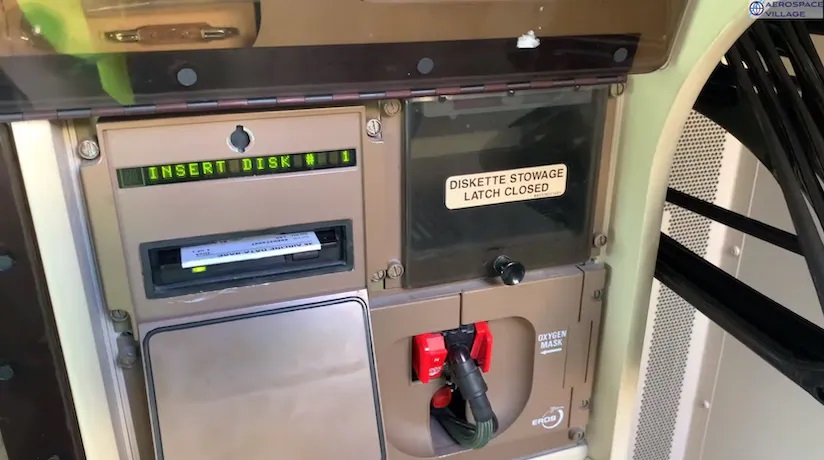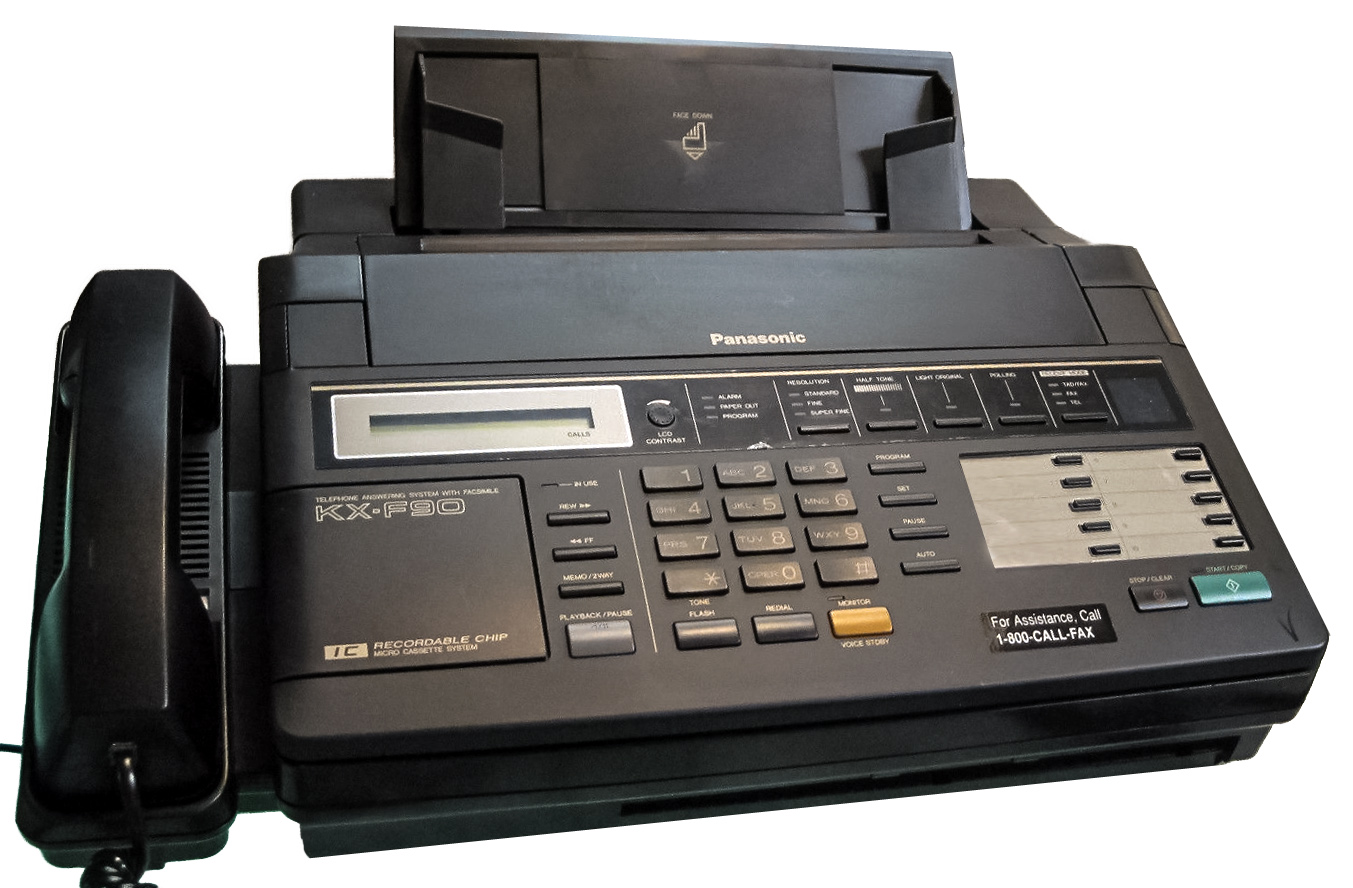In August 2022, Japanese Minister of Digital Affairs, Taro Kono, “declared war” on old storage media such as floppy disks. The original Japanese-language document provides a simple analysis of Japanese legislation, which to this day still has nearly 1900 references to outdated storage media, most of which belong in a museum. They include ordinary floppy disks, optical recording media, common definitions like “magneto-optical drive” and even “magnetic tape”. This means that, in some cases, organizations or individuals need to file certain information on an old medium, which is, to say the least, inconvenient. Diskettes are not mandatory in all cases, but judging by certain statements made by Taro Kono, a relatively recently appointed to his post, retro technology is still used more often in Japan than it should be.
Is using outdated technology a problem? Try to imagine yourself as someone who suddenly needs to file an official document on a floppy disk, with no other option given at all. Could you find at least one floppy disk at home? And how about a floppy-disk drive to put it in? The author of this article has both, so this is being written from the position of unconditional love for retro technology. But it’s important to remember that obsolete tech is simply inconvenient for critical tasks — and sometimes even unsafe. Let’s try and analyze some of the most well-known cases when old devices turn out to be needed years or decades after they were made.
Diskettes
What are they?
Among the first data carriers for PCs.
Eight inches in diameter, the first floppy disks were developed in the 1960s. In 1976, smaller 5.25-inch floppy disks were invented. This size was inherited by later optical media such as Blu-Ray disks. In the early 1980s, Sony developed more effective 3.5-inch diskettes, and for most of the 1990s they were the most popular form of data exchange among computer users. The maximum amount of data that fits onto a single 3.5-inch floppy disk is 1.44 MB. Okay, sometimes you could write more, but now we’re talking about the most compatible version that could be read in the floppy drive of any personal computer 25 years ago.

Three floppy disk versions: 8-inch, 5.25-inch, and 3.5-inch. Source.
Floppy disks were so universal for computers in the 1980–90s that all other attempts to create something either more reliable or with increased capacity failed to catch on — until CD-R and CD-RW optical media became available. Even in the early 2000s, a disk drive came as standard on most desktop PCs.
Early attempts to retire floppy disks were made back in the late 1990s: with their revolutionary design, Apple iMacs came with an optical drive only and no disk drive. It was only later — some 15 years ago — when floppy disks finally did become obsolete. Many Microsoft Word documents couldn’t even fit onto a disk, so it was much easier to save files onto a flash drive or CD. There was also the matter of reliability: floppy disks were known to suddenly lose data when you needed it most.
However, thanks to their long lifespan, floppy disks are still available today. Floppy drives are too. Connected via USB, they are even supported in the latest versions of operating systems. Nevertheless, diskettes today should only be used for exercises in nostalgia. It takes about a minute to save just a megabyte of data to one: embarrassingly slow.
Yet there are times when you have to use floppy disks. In 2016, the U.S. issued a rather dull report on a topic familiar to us: on the use of old technology in government institutions, and the need to combat this phenomenon. Certain media outlets extracted a remarkable fact from it. The American nuclear arsenal control system was still using floppy disks, and not the later ones, but the original eight-inch type.

8-inch floppy disks were, until recently, used to control the U.S. nuclear arsenal. Source.
In 2019, those floppy disks were replaced with more contemporary technology, but the system itself, based on an IBM Series/1 computer from the 1970s, is still in operation. This is a good example why old media is still used. It’s not out of love for antiquity, but because there’s no other option. Specialized computer systems built decades ago are very expensive to replace or modernize, so, as long as an antique does what it needs to do and can be repaired if required, it remains in operation.
Here’s another example. In 2020, Pen Test Partners examined a decommissioned Boeing 747 and found that a floppy drive that was used to update the navigation system. While that was a surprise to safety professionals, for those in aircraft maintenance, it’s all in a day’s work. You can read more about this here, for example.

Boeing 747s still get critical updates via floppy disks. Source.
Why does this happen? An airplane has a very long service life — decades. At the same time, aviation has some of the most stringent safety requirements. During an aircraft’s lifetime, its engines and even parts of its fuselage can be replaced multiple times. But the electronics generally remain intact. Of course, newer aircraft versions no longer use floppy disks. But in older, still reliable and well-maintained aircraft, the computer systems that help pilots usually remain unchanged. Upgrading those computer systems is more difficult because every change requires numerous safety tests. And it doesn’t stop there. Pilots are specifically trained to use avionics of a particular modification. Maintenance specialists at airports and technical centers are trained likewise around the world. So you can’t just update those systems when it takes your fancy. Which means it’s often easier to buy a new aircraft when the time comes to renew the fleet.
Fax, aka facsimile communication
What is it?
Basically, technology for transmitting copies of documents using a phone line.
Fax machines are a direct descendant of the telegraph — a method of sending text messages through wires. Both technologies originated in the 19th century, and by the beginning of the 20th century, the means of sending not just individual letters, but free-form handwritten notes and even photographs, was reasonably well perfected. Commercial use of faxes began about half a century ago. Any consumer or company could then receive and send photocopies of documents over telephone wires.

A typical fax machine from the early 1990s. Source.
Fax evolved in parallel with modems, and many of the later technologies of both these devices had much in common. The fundamental difference was that modems required a computer, but a fax was a self-sufficient machine. Many modems, with a special program on a PC, could act as a fax machine. In today’s terms, a fax machine contained a document scanner, a printer, and a modem. If you needed to send a document, you scanned it, entered the recipient’s phone number, and a digital copy (in rather average quality, usually monochrome) was wired.
Before the arrival of the internet, this was quite a reliable way of document sharing over distances. Potential clients could get a price list, or a copy of a contract, and it could be sent back signed and stamped. Curiously, still today in some countries a signed document sent by fax is considered legally binding, whereas that same document, signed, scanned and sent by e-mail, may not be counted as evidence in court, for example.
There’s not a single reason to use a fax machine in the 21st century. It’s easier to send a document by e-mail or take a photo and share it in a messenger. If you need to verify the identity of a document’s creator, there’s electronic digital signature technology. Nevertheless, faxes are still used rather a lot in some regions, including in Japan. There, employees not having a fax at home ran into work communication issues during the covid-19 pandemic. It turned out that for many it’s difficult to change established communication processes with clients or colleagues, without losing necessary contacts; it’s easier to continue using outdated technology. In addition, the age factor plays a role for fax machines: the older people get, the harder it is for them to master new computer systems; while the old ones “work just fine”.
The fax machine in our top-4 is probably the simplest retro-technology of all four. If for some reason you need to use one, you can have a real machine in the office. But you can also fully emulate a fax on a virtual server. It’s connected to a virtual phone line, and is in fact a simple data transmission channel over the internet. So, unlike with aircraft, it’s possible to place legacy tech on a modern track, where it works with no trouble.
Typewriter
What is it?
Essentially, an ancient text processor: a way of creating typewritten manuscripts, and one of the oldest technologies that seriously influenced the evolution of computers.
The typewriter is a great technological achievement, and was almost fully formed at the end of the 19th century. Every computer has vestiges of this earlier development. The typical QWERTY layout was standardized in the 1890s. The shift key gets its name from a mechanical function in a typewriter, where the whole set of bits that print characters on paper through an ink ribbon is shifted upward to type capital letters. Typing was the first thing that personal computers made more convenient in the 1970s and 1980s. On some electronic typewriters, you could enter and edit a single line of text on a small character display, if required. A computer allows you to create an entire multi-page document before printing it off. It can contain characters from different alphabets. And not just letters, but graphics, and even images. You don’t even have to print the document on a printer: you can send it to an editor, boss or client electronically. On a floppy disk, for example!

A typical mechanical typewriter from the 1970s. Source.
Still, mechanical typewriters do have important advantages: they can be operated without electricity, they cannot be infected with a virus, and their data storage device won’t fail. However, documents are more likely to be damaged by fire, flood or small rodents. After numerous scandals related to cyber-espionage, some media reported that certain state authorities of different countries (for example, Russia and Germany) were buying typewriters to handle the most sensitive information.
Indeed, you could say that the most secure computer is no computer at all. And in some cases, this level of information protection is probably entirely justified. But for mere mortals, the typewriter has long been an artifact from the past, used for entertainment or creating a special atmosphere of creativity. You cannot be distracted by pictures from social networks if your “word processor” can’t connect to the internet.
A notable fact is that a typewriter may be safe from a cyberattack, but it does not ensure anonymity. In the event of an investigation, it’s easy enough to match a document to a particular typewriter based on minor defects in the typed characters, or even by the way a particular person hits the keys.
Old computers
Outside specialized systems, outdated government procedures and the like, most retro technologies need to be used for the two reasons already described above; that is, either moving over to new hardware is very expensive, or just inconvenient as everyone is set in their ways.
Last year, a YouTuber described how an elderly campsite owner still uses an Atari ST from 1986 to run his business. Frans Bos, from the Netherlands, wrote his own software to keep track of visitors, bookkeeping, and other things. And still today (or at least in 2021 when the video was shot) he still uses his ancient software, because “it does the job”.
There are more complicated, more common, and considerably less romantic examples. A machine-tool controlled by software written for MS-DOS and thus only working with a corresponding PC, for example. Also, this is extremely common when it comes to servicing relatively old cars. They have a built-in computer, but the software to communicate with it requires Windows 98 or Windows XP, and preferably with hardware from twenty years ago. Even large car manufacturers are forced to keep ancient PCs in stock, just in case a customer comes to them with a repair request.
Legacy technology is used plenty in industry, where computerized devices cost millions or tens of millions of dollars and last for decades. At the other end of the spectrum, you will often find a laptop from the early 2000s running long-unsupported diagnostic programs at your nearest car service center. Often hidden from sight, ancient technology is at work in organizations. Somewhere in a dusty closet, a system administrator’s PC from the 1990s is doing its thing with software written by someone who has long since retired. And only when it gets accidentally unplugged does it become clear that a company’s profits are bound to this museum piece.
Advanced protection of junk
Let’s look at all these artifacts from a security perspective. Is it possible to transmit a malicious file on a floppy disk? Yes, easily, and that’s actually how viruses started to spread — even before the internet era. Yet modern malicious code might not fit onto a floppy disk, as some malware now takes up dozens of megabytes. Ancient malware, on the contrary, may not run on modern operating systems.
Perhaps the greatest danger is posed by “simply old computers”, especially if they’re connected to a company’s local network or even the internet. Older operating systems, like Windows XP, have not received updates for many years. On the other hand, vulnerabilities in them are well known. Yes, a would-be hacker would likely have to bone up on the equipment to hack such an ancient PC. But it wouldn’t take long. And there are plenty of ready-made tools to exploit the numerous holes in the software.
Thus, it’s easy to imagine how a hacker could gain access to an entire enterprise network using an outdated and vulnerable computer, even if the rest of the infrastructure is up to date. Perhaps the greatest danger from such a scenario is posed for medical institutions. Reliable and still current devices for diagnosing patients, monitoring pulse, temperature and blood pressure, and regulating medication, all run on outdated software. Maliciously disabling such systems, for example in order to demand a ransom, could cost someone’s life. So, floppy disks are not the problem. They’re just inconvenient to handle. The real problem is that floppy disks usually come with an outdated computer.
If the use of such old systems is vital, then it’s imperative to isolate them from the rest of the network so that they’re not the Achilles heel of the entire IT infrastructure. It’s desirable to use a security solution that can at least scan archived data carriers and is able to neutralize malware of the appropriate age. Kaspersky solutions do an excellent job of this, most often identifying viruses of the past through behavioral analysis.
It can be difficult to part with familiar work tools you’ve had years. But sometimes it’s simply necessary when an old solution, by definition, no longer provides the necessary level of security. Despite the fact that modern software and services are taking up more disk space over time and requiring ever more powerful hardware, they also provide increased reliability in most cases. For example, it might be a simple data backup, unattainable in the case of a paper archive of typewritten documents. Finally, we have some useful advice. If the authorities in your country require you to use floppy disks, keep them away from smartphones — especially the latest iPhone models. The powerful magnets hidden in a phone case can accidentally wipe all the data stored on an old disk!…
 Technology
Technology

 Tips
Tips